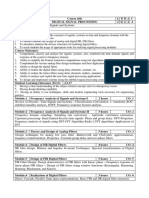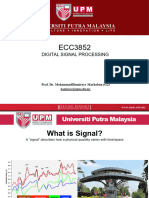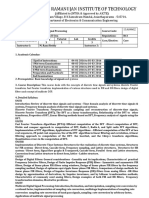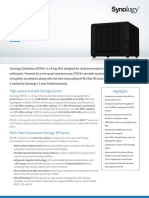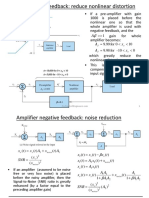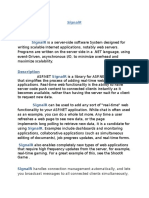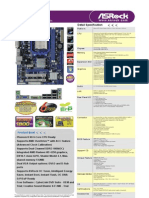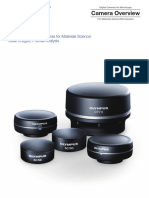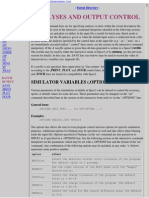IPCC (4 credits) template
Digital Signal Processing Semester 5
Course Code BVL502 CIE Marks 50
Teaching Hours/Week (L:T:P: S) 3:0:2:0 SEE Marks 50
Total Hours of Pedagogy 40 hours Theory + 8-10 Lab slots Total Marks 100
Credits 04 Exam Hours 3 Hours
Examination nature (SEE) Theory
Course objectives:
1. Preparation: To prepare students with fundamental knowledge/ overview in the field of Digital Signal Processing
2. Core Competence: To equip students with a basic foundation of Signal Processing by delivering the basics of Discrete
Fourier Transforms, their properties, efficient computations & the design of digital filters.
Teaching-Learning Process (General Instructions)
These are sample Strategies; that teachers can use to accelerate the attainment of the various course outcomes.
1. Lecture method (L) does not mean only traditional lecture method, but different type of teachingmethods may be
adopted to develop the outcomes.
2. Show Video/animation films to explain the different concepts of Digital Signal Processing
3. Encourage collaborative (Group) Learning in the class
4. Ask at least three HOTS (Higher order Thinking) questions in the class, which promotes critical thinking
5. Adopt Problem Based Learning (PBL), which fosters students’ Analytical skills, develop thinking skills such as the
ability to evaluate, generalize, and analyze information rather than simply recallit.
6. Topics will be introduced in a multiple representation.
7. Show the different ways to solve the same problem and encourage the students to come up withtheir own creative ways
to solve them.
8. Discuss how every concept can be applied to the real world - and when that's possible, it helpsimprove the students'
understanding.
9. Adopt Flipped class technique by sharing the materials / Sample Videos prior to the class and havediscussions on the
that topic in the succeeding classes.
10. Give Programming Assignments.
MODULE-1
Introduction: Signals, Systems and Signal Processing, Classification of Signals, The Concept of Frequency in
Continuous Time and Discrete Time Sinusoidal Signals. [Text1: 1.1, 1.2, 1.3: 1.3.1, 1.3.2]
Discrete Time Signals and Systems: Discrete Time Signals, Discrete Time Systems, Analysis of Discrete Time
Linear Time Invariant Systems.
[Text 1: 2.1.1, 2.1.2, 2.2.1, 2.2.2, 2.2.3, 2.3.1, 2.3.2, 2.3.3, 2.3.5]
MODULE-2
Z-Transforms: The z-Transform, Properties of the z-Transform (Statements only), The System Function of a
Linear Time Invariant system. Text1:3.1, 3.2, 3.3.3.
The Discrete Fourier Transform: Frequency Domain sampling and Reconstruction of Discrete Time Signals,
The DFT, The DFT as Linear Transformation. Properties of DFT: Periodicity, Linearity and Symmetry for real
valued sequence, Multiplication of two DFTs and Circular Convolution.
[Text1: 7.1.1, 7.1.2, 7.1.3, 7.2: 7.2.1, 7.2.2]
MODULE-3
DFT Properties: Time reversal of a sequence, Circular Time shift of a sequence, Circular frequency shift,
Complex conjugate property, Multiplication of two sequences, Perceval’s theorem. Linear Filtering Methods
based on the DFT. (Text 1: 7.3].
Efficient Computation of the DFT- FFT Algorithms: Direct Computation of the DFT, Radix-2 FFT Algorithms:
computation of DFT and IDFT in decimation in time.
[Text1: 8.1: 8.1.1, 8.1.3].
MODULE-4
@#@#@16092024 1
� IPCC (4 credits) template
Design of FIR Filters: Characteristics of practical frequency-selective filters, Symmetric and Antisymmetric FIR
filters, Design of Linear-phase FIR (low pass and High pass) filters using windows - Rectangular, Hamming and
Blackman windows. Structure for FIR Systems: Direct form and Cascade form.
[Text1: 10.1.2, 10.2.1, 10.2.2]
MODULE-5
IIR Filter Design: Infinite Impulse response Filter Format, Bilinear Transformation Design Method, Analog
Filters using Low pass prototype transformation, Normalized Butterworth Functions, Bilinear Transformation
and Frequency Warping, Bilinear Transformation Design Procedure, Digital Butterworth Filter Design (Lowpass
and High pass) using BLT.
[Text2: 8.1, 8.2, 8.3 (Butterworth filter design), 8.8.1]
@#@#@16092024 2
� IPCC (4 credits) template
PRACTICAL COMPONENT OF IPCC
List of Programs to be implemented & executed using any programming languages like Moku:Go/
MATLAB/OCTAVE (but not limited to)
Sl.NO Experiments
1 Program to generate the following discrete time signals.
a) Unit sample sequence, b)Unit step sequence, c) Exponential sequence, d)Sinusoidal sequence, e)
Random sequence
2 Program to perform the following operations on signals.
a) Signal addition, b) Signal multiplication, c)Scaling, d) Shifting, e)Folding
3 Program to perform convolution of two given sequences (without using built-in function) and display the
signals.
4 Consider a causal system y(n) = 0.9y(n-1)+x(n).
a) Determine H(z) and sketch its pole zero plot.
b) Plot |H(ejω)| and ∠ H(ejω)
c) Determine the impulse response h(n).
5 Computation of N point DFT of a given sequence (without using built-in function) and to plot the
magnitude and phase spectrum.
6 Using the DFT and IDFT, compute the following for any two given sequences
a)Circular convolution
b) Linear convolution
7
Verification of Linearity property, circular time shift property & circular frequency shift property of DFT.
8
Develop decimation in time radix-2 FFT algorithm without using built-in functions.
9 Design and implementation of digital low pass FIR filter using a window to meet the given specifications
10 Design and implementation of digital high pass FIR filter using a window to meet the given specifications
11 Design and implementation of digital IIR Butterworth low pass filter to meet the given specifications.
12 Design and implementation of digital IIR Butterworth high pass filter to meet the given specifications
Course outcomes (Course Skill Set):
At the end of the course, the student will be able to:
Analyse the different types of signals and systems used in digital signal processing.
Compute the response of an LTI system using time and frequency domain techniques.
Develop algorithms for the efficient computations of DFT and IDFT.
Design of digital FIR filters for the given specifications using different window methods.
Design of digital IIR digital filters using bilinear transformation method.
Assessment Details (both CIE and SEE)
The weightage of Continuous Internal Evaluation (CIE) is 50% and for Semester End Exam (SEE) is 50%. The
minimum passing mark for the CIE is 40% of the maximum marks (20 marks out of 50) and for the SEE minimum
passing mark is 35% of the maximum marks (18 out of 50 marks). The student is declared as a pass in the course if
he/she secures a minimum of 40% (40 marks out of 100) in the total of the CIE (Continuous Internal Evaluation)
and SEE (Semester End Examination) taken together.
The IPCC means the practical portion integrated with the theory of the course. CIE marks for the theory component
are 25 marks and that for the practical component is 25 marks.
@#@#@16092024 3
� IPCC (4 credits) template
CIE for the theory component of the IPCC
25 marks for the theory component are split into 15 marks for two Internal Assessment Tests (Two Tests,
each of 15 Marks with 01-hour duration, are to be conducted) and 10 marks for other assessment methods
mentioned in 22OB4.2. The first test at the end of 40-50% coverage of the syllabus and the second test after
covering 85-90% of the syllabus.
Scaled-down marks of the sum of two tests and other assessment methods will be CIE marks for the theory
component of IPCC (that is for 25 marks).
The student has to secure 40% of 25 marks to qualify in the CIE of the theory component of IPCC.
CIE for the practical component of the IPCC
15 marks for the conduction of the experiment and preparation of laboratory record, and 10 marks for the
test to be conducted after the completion of all the laboratory sessions.
On completion of every experiment/program in the laboratory, the students shall be evaluated including viva-
voce and marks shall be awarded on the same day.
The CIE marks awarded in the case of the Practical component shall be based on the continuous evaluation of
the laboratory report. Each experiment report can be evaluated for 10 marks. Marks of all experiments’ write-
ups are added and scaled down to 15 marks.
The laboratory test (duration 02/03 hours) after completion of all the experiments shall be conducted for 50
marks and scaled down to 10 marks.
Scaled-down marks of write-up evaluations and tests added will be CIE marks for the laboratory component of
IPCC for 25 marks.
The student has to secure 40% of 25 marks to qualify in the CIE of the practical component of the IPCC.
SEE for IPCC
Theory SEE will be conducted by University as per the scheduled timetable, with common question papers for the
course (duration 03 hours)
1. The question paper will have ten questions. Each question is set for 20 marks.
2. There will be 2 questions from each module. Each of the two questions under a module (with a maximum of 3
sub-questions), should have a mix of topics under that module.
3. The students have to answer 5 full questions, selecting one full question from each module.
4. Marks scored by the student shall be proportionally scaled down to 50 Marks
The theory portion of the IPCC shall be for both CIE and SEE, whereas the practical portion will have a CIE
component only. Questions mentioned in the SEE paper may include questions from the practical
component.
The minimum marks to be secured in CIE to appear for SEE shall be 10 (40% of maximum marks-25) in the
theory component and 10 (40% of maximum marks -25) in the practical component. The laboratory
component of the IPCC shall be for CIE only. However, in SEE, the questions from the laboratory
component shall be included. The maximum of 04/05 sub-questions are to be set from the practical
component of IPCC, the total marks of all questions should not be more than 20 marks.
SEE will be conducted for 100 marks and students shall secure 35% of the maximum marks to qualify for
the SEE. Marks secured will be scaled down to 50.
The student is declared as a pass in the course if he/she secures a minimum of 40% (40 marks out of 100)
@#@#@16092024 4
� IPCC (4 credits) template
in the sum total of the CIE (Continuous Internal Evaluation) and SEE (Semester End Examination) taken
together.
Suggested Learning Resources:
Text Books:
1. Proakis & Manolakis, “Digital Signal Processing - Principles Algorithms & Applications”, 4th Edition, Pearson
education, New Delhi, 2007. ISBN: 81-317-1000-9.
2. Li Tan, Jean Jiang, “Digital Signal processing - Fundamentals and Applications”, Academic Press, 2013, ISBN: 978-
0-12-415893.
3. Vinay K. Ingle, John G Proakis , “Digital Signal Processing Using MATLAB, A problem Solving Companion”,
Cengage Learning, 2018, ISBN: 93-86668-11-4
Reference Books:
1. Simon Haykin and Barry Van Veen, “Signals and Systems”, 2nd Edition, 2008, Wiley India. ISBN9971-51- 239-4.
2. Sanjit K Mitra, “Digital Signal Processing, A Computer Based Approach”, 4th Edition, McGraw Hill Education,
2017. ISBN:978-1-25-909858
3. Oppenheim & Schaffer, “Discrete Time Signal Processing", PHI, 2003.
4. D Ganesh Rao and Vineeth P Gejji, “Digital Signal Processing" Cengage India Private Limited, 2017, ISBN:
9386858231
Web links and Video Lectures (e-Resources):
1. Digital Signal processing, https://nptel.ac.in/courses/117102060
Activity Based Learning (Suggested Activities in Class)/ Practical Based learning
Programming Assignments / Mini Projects can be given to improve programming skills
@#@#@16092024 5
































